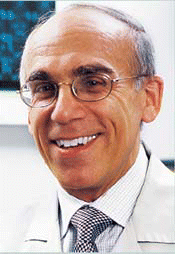Dr. Friedman advocated taking out 3+ tonsils at the same time that a minimally invasive palatal procedure is performed (radiofrequency ablation, Pillar implant, or injection). He also said that he would perform simultaneous radiofrequency ablation of the tongue if the tongue was in Friedman position III.
Explore This Issue
April 2008Persistent Snoring After Minimally Invasive Procedures
Dr. Friedman said that the best approach for snoring and for sleep apnea is multilevel noninvasive procedures, because the majority of patients have multilevel obstruction. If the snoring does not improve with the first surgical procedure, he often adds two more pillars and does additional tongue-based surgery radiofrequency reduction.
Verification of snoring is critical, Dr. Mickelson said. He described a patient whose wife complained that he snored; a tape recording showed that the patient was merely breathing heavily during sleep. Dr. Weaver added that a spouse’s complaint of snoring might be a scapegoat for other marital problems. Dr. Mickelson noted that not all otolaryngologists have all the tools to determine where the snoring comes from. One approach is to perform a fiberoptic exam and have the patient recreate the sound to see what structures are involved. If the palate is involved, then up to three injections can be done and up to five palatal implants can be placed. Uvuloplasty should be done for a long uvula, he added.
For patients who do not have a good response to minimally invasive surgery, Dr. Weaver offers uvulopalatopharyngoplasty (UPPP), which is more aggressive. Insurers often do not reimburse for this procedure for snoring without obstructive sleep apnea/hypopnea syndrome (OSAHS), but some patients want it anyway. The data suggest that minimally invasive palate stiffening procedures succeed in 60 percent to 70 percent of patients, and UPPP succeeds in 70 percent to 80 percent of snoring patients, Dr. Weaver told listeners. I let the patient decide.
Dr. Friedman never uses UPPP for snoring without OSAHS. I am concerned about permanent changes, he noted. It is an aggressive procedure that results in pharyngeal changes that should be reserved for sleep apnea only.
Panelists said that documentation of nasal obstruction and of medication trials is needed before nasal surgery to obtain insurance coverage.
Whatever procedures are used, the panel’s consensus was that patients need to be educated about these procedures. We are limited. It is important to give patients realistic expectations. On the visual analog scale of 1 to 10, tell them that with sleep surgery, a reasonable expectation is reducing snoring levels from 10/10 down to 3/10. Do not oversell a procedure, Dr. Friedman advised.

Leave a Reply